The young gardener understands that things will go wrong, but expects that there will be fewer issues as he gains experience. And then he tends his garden for a decade or two, with fewer, but continuing unexpected and unexplained occurrences, and he wonders if he will ever figure this out. No, he will not, at least not completely. There are too many pieces to this puzzle to make sense of all things that go wrong, and of course he doesn’t question the many things that go right, which can be equally confounding, but less concerning.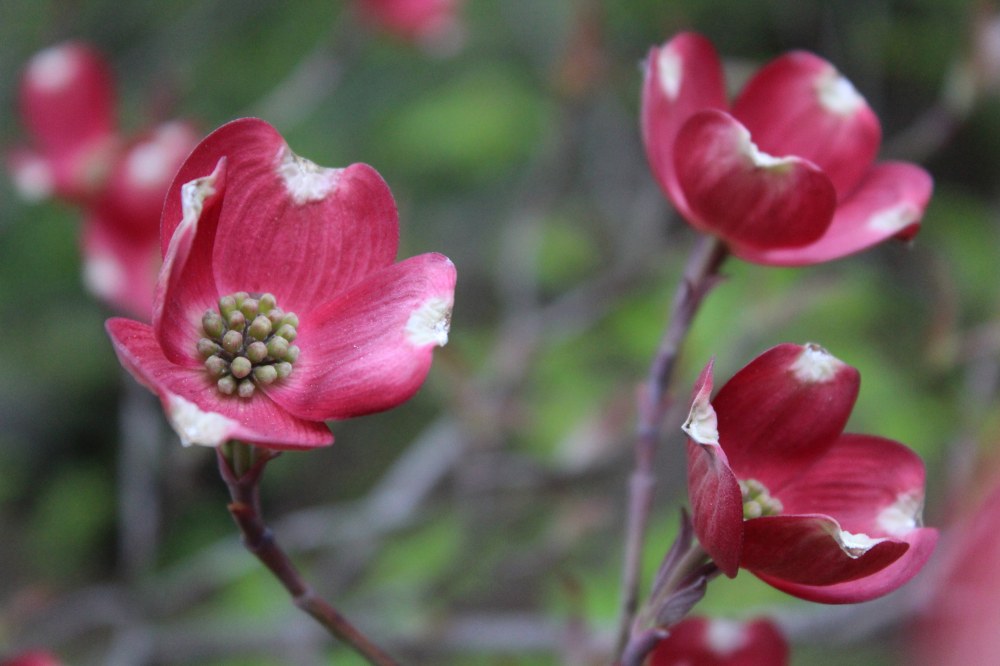
Today, I am quite pleased with the scattering of red blooms on the ‘Cherokee Sunset’ dogwood (Cornus florida ‘Cherokee Sunset’, above). In recent years I’ve bemoaned the lack of flowers, and in fact I cannot recall the tree ever flowering since it was planted a dozen years ago. Probably, it flowered a time or two soon after planting, but not in recent years. I suspect, and of course this is an outright guess, that the culprit is powdery mildew, which is commonplace on dogwoods in areas with high humidity and regular summer rainfall. Clearly, the tree has been stunted in growth, and ‘Cherokee Sunset’ is more susceptible to mildew than many recent dogwood introductions that have been bred specifically for resistance to mildew and black spotting.
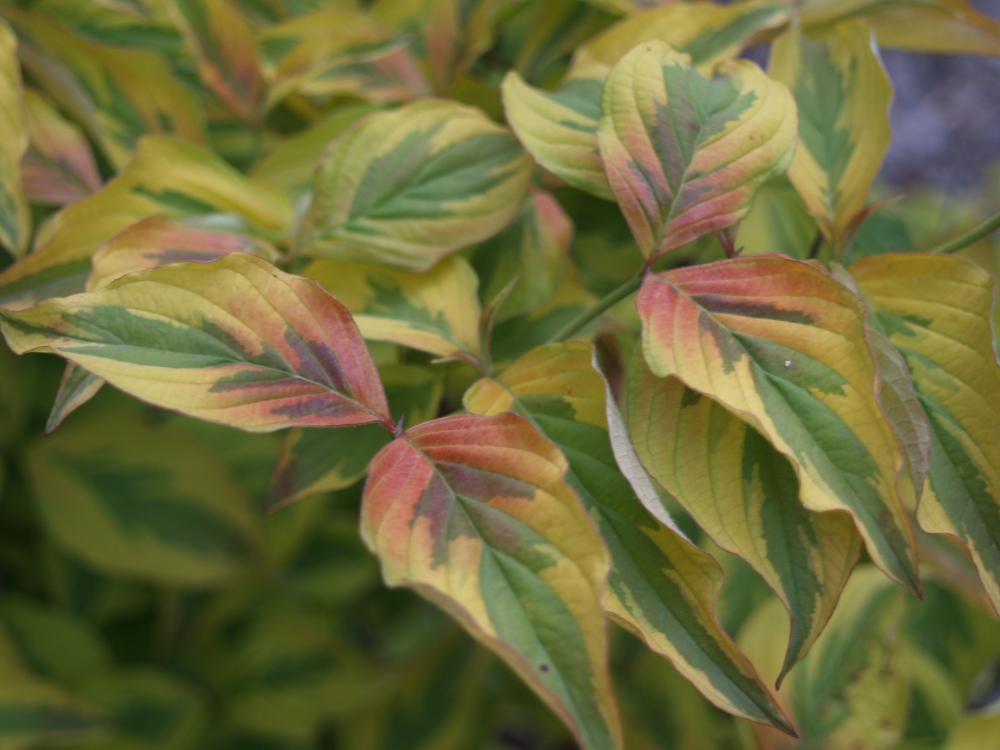 The variegated foliage (above) is delightful each spring, even without flowers, but by mid summer the fog of mildew covers and deforms leaves. I suppose that diligent spraying of a fungicide might prevent this, but I don’t spray for anything. Last year, for whatever unexplained reason, mildew was minimal, so this spring there are flowers, and I’m not overly concerned with why.
The variegated foliage (above) is delightful each spring, even without flowers, but by mid summer the fog of mildew covers and deforms leaves. I suppose that diligent spraying of a fungicide might prevent this, but I don’t spray for anything. Last year, for whatever unexplained reason, mildew was minimal, so this spring there are flowers, and I’m not overly concerned with why.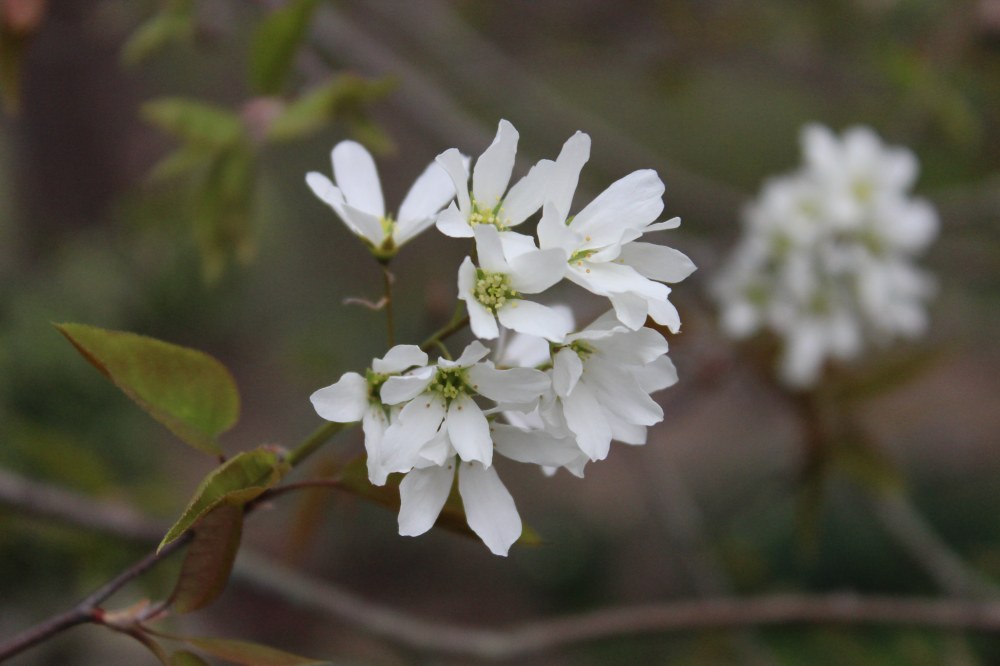
At the start of May, flowers of dogwoods and redbuds have not faded yet, though with a very warm week ahead the blooms are not likely to last more than another few days. The one serviceberry (Amelanchier canadensis, above) in the garden quickly reached peak bloom a week ago, then faded immediately, with petals littering the creek and small pond beneath the overhanging tree (below). Again, for whatever reason, I rarely see bees pollinating flowers of the serviceberry, so I’ve never seen a single fruit on the tree. Whether this is due to the brevity of flowering, or the tree’s shaded location, I long ago gave up worrying about.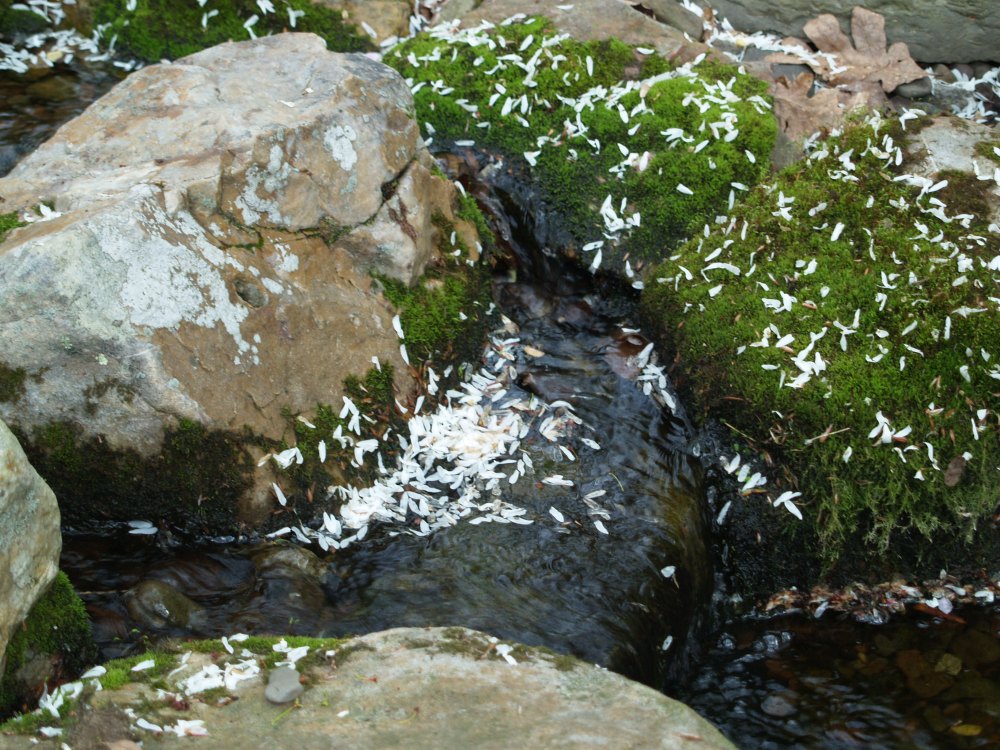
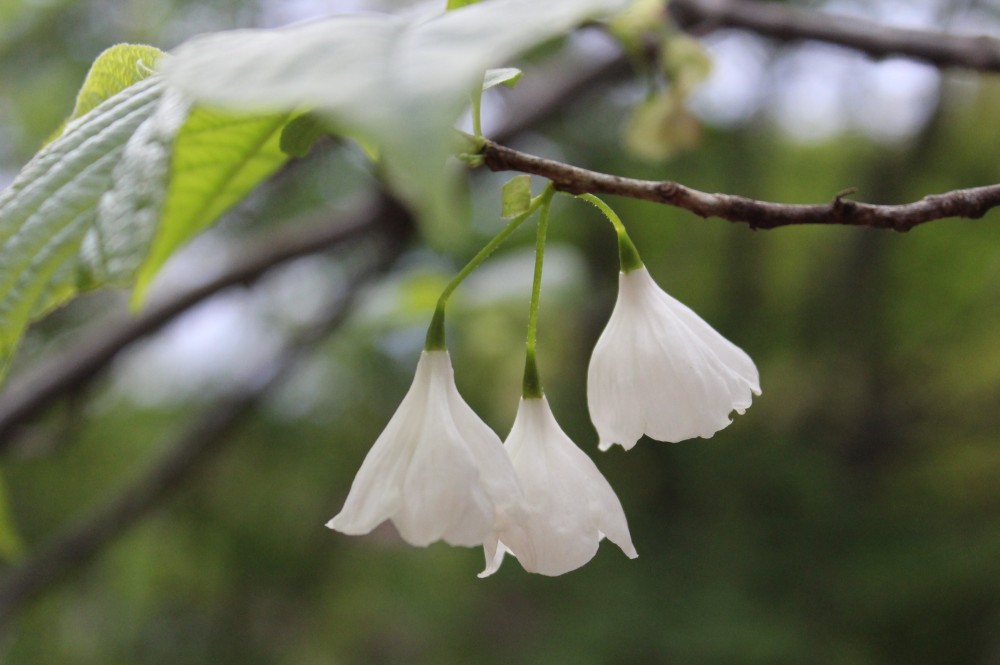
The Carolina silverbell (Halesia carolina, above) has only a single lower branch low enough to see flowers close up, though if I get the right angle from the kitchen window I can view even uppermost branches (and flowers), so I’m not complaining. In this shaded spot beneath towering maples and tulip poplars, the tall growth and sparse branching is not surprising. Many times I’ve been tempted to plant another in a sunnier spot, but with a lack of space something else would have to go, so that’s not likely to happen. To my thinking, Silverbell is exceptional, and under appreciated, but what do I know?
How pretty the dogwood is! I never knew they came in other colours! And I love the fact that no one will ever figure gardening out! 😀 lovely pictures and prose as always. Thank you Dave! 😀
I have grown dogwoods at the farm for a few years. I do not like growing them much because I know that most of them go into gardens where they will not be happy. However, now that I am working away from the farm, I have seen the best dogwoods I have ever seen in the gardens of a neighborhood in the Santa Cruz Mountains. It is amazing that they can do so well here, just a few miles away from the chaparral climate of the Santa Clara Valley. They seem to be right at home in the redwood forests.
The dogwood is a beautiful cultivar – both leaves and flowers.